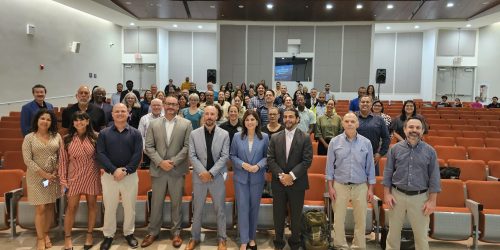A special issue of the open-access journal Climate Risk Management focuses on the role that boundary organizations—organizations that help broker scientific information between scientists and potential users—play in increasing the use of climate information in the United States. In particular, research included in the issue seeks to understand how these organizations adapt and innovate.
One way in which boundary organizations have innovated is by forming boundary chains to narrow the gap between climate science and adaptation action. Boundary chains form when two or more boundary organizations join forces to leverage each others’ resources and strengths to increase the use of climate information.
For the past five years, the Great Lakes Integrated Sciences + Assessments (GLISA), NOAA’s Great Lakes RISA office, has experimented with the boundary chains concept and approach to facilitate the integration of climate science production and application in decisions to rapidly expand the diversity and extent of its climate outreach. The special issue advances this concept in more depth, illustrating how boundary chains not only narrow climate knowledge (and other kinds of knowledge) gaps to support adaptation but also build capacity and networks that enhance societal resilience more broadly.


First, a group of papers shed light on the benefits of boundary chains for enhancing the production of usable knowledge and draw lessons from those efforts to advance climate information use in practice. Second, a series of papers expands our thinking about the role of boundary organizations and boundary chains in increasing the availability and access to climate information among marginalized groups and to addressing complex, politicized environmental problems. The final paper is a perspective for the issue by Kirchhoff et al. (2015c) that proposes a conceptual model for assessing the effectiveness of boundary chains.
Based on the experiences detailed in the other papers in the issue, Kirchhoff et al. argue that the key factor underlying effective boundary chains is synergy. This synergy arises from a clear distinction between the relative strengths that each partner can play in the process (complementarity) as well as the extent to which they interact and ultimately have influence on one another (embeddedness).
By advancing knowledge on boundary organizations and boundary chains, the papers in this issue highlight the important contributions to theory and practice that NOAA RISAs (including GLISA and the Alaska Center for Climate Assessment and Policy) facilitate.
Kirchhoff, Christine J., Maria Carmen Lemos, and Scott Kalafatis. 2015a. “Narrowing the gap between climate science and adaptation action: The role of boundary chains.” Climate Risk Management.
To access the full article, visit: http://www.sciencedirect.com/science/article/pii/S2212096315000200









